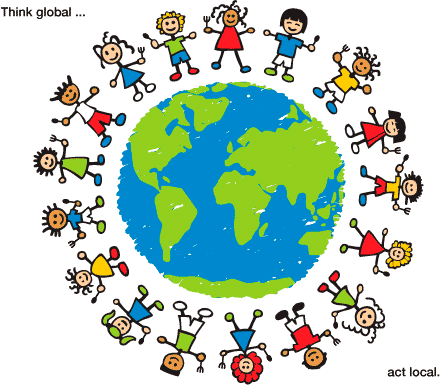What is the human-environment interaction? According to the Joint Committee on Geographic Education of the National Council for Geographic Education (NCGE) and the Association of American Geographers (AAG), they wrote "In studying human/environment interaction, geographers look at all the effects—positive and negative—that occur when people interact with their surroundings. Sometimes a human act, such as damming a river to prevent flooding or to provide irrigation, requires consideration of the potential consequences.
| The construction of Hoover Dam on the Colorado River, for example, changed the natural landscape, but it also created a reservoir that helps provide water and electric power for the arid Southwest.
|

|
Studying the consequences of human/environment interaction helps people plan and manage the environment responsibly." ~http://www.nationalgeographic.com/resources/ngo/education/themes.html

|
Another source states that "Humans depend upon the environment, modify it, adapt to it--in short, they interact with it. Humans have transformed the environment and adjusted to it, creating many different places on Earth. Humans affect the environment and the environment affects humans. In order to understand our world it is vital to understand not only its people but also the environments which sustain them.
|
| Most contemporary human-induced environmental changes have not been planned or intended. Many of the effects humans have on the environment are not anticipated. Some are not even felt in the places in which they originate. Rather, they appear in other locations, often places that are environmentally vulnerable. Consider the chlorofluorocarbons (CFC)-ozone-polar connection. Mid-latitude CFC use has weakened the ozone layer most at the Poles. The greatest effects are felt at high latitudes.
|

|

|
Geography helps students to understand that the world is a single environmental system affected by its inhabitants. It helps them to understand the truth of the slogan "Act Locally, Think Globally." World solutions are required to address world problems such as ozone depletion, loss of biodiversity, and climate change. Geography is the one discipline that bridges the physical and social sciences and can help students, and the public at large, understand the processes which transform our planet.
|
Geographers see it this way: "...humankind is dependent upon an earth incapable of supporting infinite demands and capable both of being improved and of being damaged by the way in which it is used" (W.B. Meyer and B.L. Turner 1996, 139). The ways people interact with the environment depend upon three factors: the nature of the environment; the culture and values of the human group; and their level of technology." ~http://ritter.tea.state.tx.us/ssc/teks_and_taas/teks/glossH.htm Last modified: Tuesday, August 10, 2010, 1:55 PM





 INTERACTION
INTERACTION


